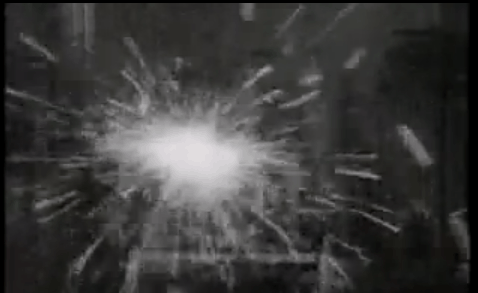BBC Bang Goes the Theory demonstrates that NOT all Brazil nuts are radioactive
The demonstrations in this BBC video are, as the Brits might say, brilliant. Though it has been posted since June, I learned of its existence from the following tweet:
Debunking lack of information on #radiation, the basis of #nuclear science. Very informative video from the BBC… http://t.co/xzsVcYL8OE
— Futuro Nucleare (@futuronucleare) January 4, 2014
I especially liked Dr. Yan’s explanation about why the Brazil nuts he had on his table were not radioactive, even though many nuclear training programs mention them as common sources of naturally occurring radioactive material.
As Dr Yan describes, Brazil nut trees have extensive root networks. They are some of the largest trees in the Amazon rain forest. Because the pollination process is dependent on a uniquely balanced system of specific flowers and large bees, most of the world’s Brazil nuts are harvested from wild trees. In recent years, a surprising 50% of of the nuts in world trade come from Bolivia, not Brazil.
As Dr. Yan explains, when there is naturally occurring radioactive material (NORM) in soil where those roots gather nutrients, some of the material will end up in the nuts. However, the fruit from trees growing in areas where the concentration of uranium, thorium and their daughter products in the soil is low will contain a measurably lower quantity of radioactive material than the fruit from trees in places where the concentrations are higher.
That is completely logical; if there is no NORM to gather, the roots cannot gather it.
The demonstration that Dr. Yan provides in his short video convinced me that the Oak Ridge Associated Universities page titled Brazil Nuts that serves as the source for the Brazil nut Wikipedia page — and probably serves as the source for many radiation training programs — should be revised. It currently makes the following statement:
It is not true, as is sometimes thought, that the high concentration of radium in Brazil nuts is due to elevated levels of the uranium and/or thorium series in the soil in which the tree grows. The accumulation of the radium (and barium) is due to the very extensive root system of the tree.
Theory-to-practice exercises — like taking measurements with a radiation detector — often show that academic theories are not quite correct.
Note: The demonstration also illustrates the value of using accurate radiation detectors in public communications efforts. It helped me decide that one of the first investments of the resources that Atomic Insights subscribers have provided will be the purchase of a portable radiation detector.


Happy to see that you’ve discovered this nice BBC video from my tweet, Rod! It’s always an honor to be retweeted and now even blogged by “Atomic” Rod!
Happy Nuke Year!
Luca Bertagnolio
aka Futuro Nucleare
Fail poor science
Gamma spectrometry, lead castle and a 2 inch sodium iodide thallium doped scintillation crystal and your find a world of radioactivity in Brazil nuts.
Small amount of uranium/thorium,radium etc
@Daniel
Not all Brazil nuts have the same level of radioactive material. That is the point. You’re comment is the one that fails.
Using a geiger counter on food is poor science as the instrument isn’t suitable for food radioactivity detection unless highly contaminated.
Run the sample in a lead castle with HPGe or sodium iodide detector and your find NORM.
Far better to explain NORM and the fact it is everywhere, than as the video presented makes out no radioactivity-when it should state that any Norm is either at background level or below geiger counter detection.